| 1. |
- From the CommCell Browser, navigate to <Client> |
SAP for Oracle.
- Right-click SAP for Oracle | All Tasks and click New Instance
(ORACLE SID).
|
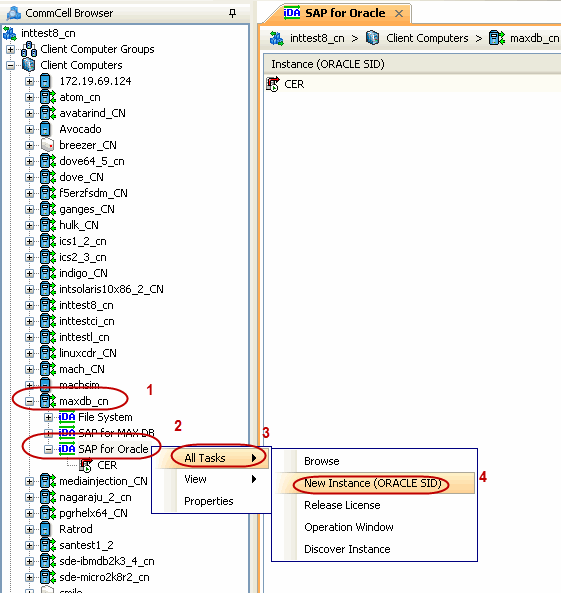 |
| 2. |
- Enter the Instance Name.
- Browse or enter the path to the Oracle application files
in Oracle Home.
- Browse or enter the path to the Oracle data and control
files in SAP
DATA PATH.
- Select a Storage Policy from the drop down list.
If you
do not have a Storage Policy created, follow the steps given below
to create a Storage Policy.
If you have already created a Storage Policy skip to
step 4.
|
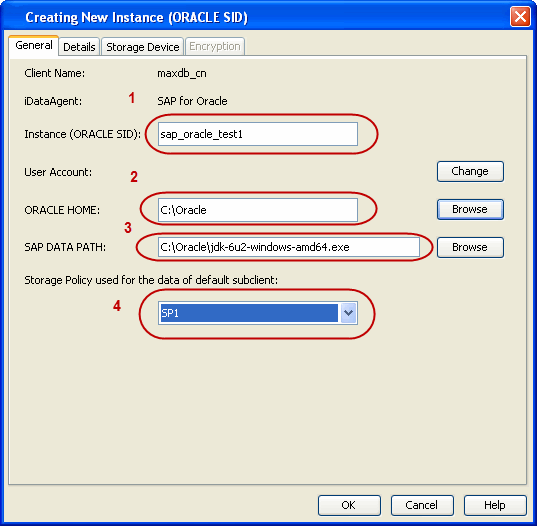 |
| 3. |
Create a Storage Policy:
- From the CommCell Browser, navigate to Policies.
- Right-click the Storage Policies and then click New
Storage Policy.
- Follow the prompts displayed in the Storage Policy Wizard. The required
options are mentioned below:
- Select the Storage Policy type as
Data Protection and Archiving and click Next.
- Enter the name in the Storage Policy Name box and click
Next.
- From the Library list, click the name of a disk library
to which the primary copy should be associated and then click
Next.
Ensure that you select a library attached to a
MediaAgent operating in the current release.
- From the MediaAgent list, click the name of a MediaAgent
that will be used to create the primary copy and then click Next.
- For the device streams and the retention criteria information,
click Next to accept default values.
- Select Yes to enable deduplication for the primary copy.
- From the MediaAgent list, click the name of the
MediaAgent that will be used to store the Deduplication store.
Type the name of the folder in which the deduplication database must
be located in the Deduplication Store Location or click the Browse
button to select the folder and then click Next.
- Review the details and click
Finish to create the Storage Policy.
|
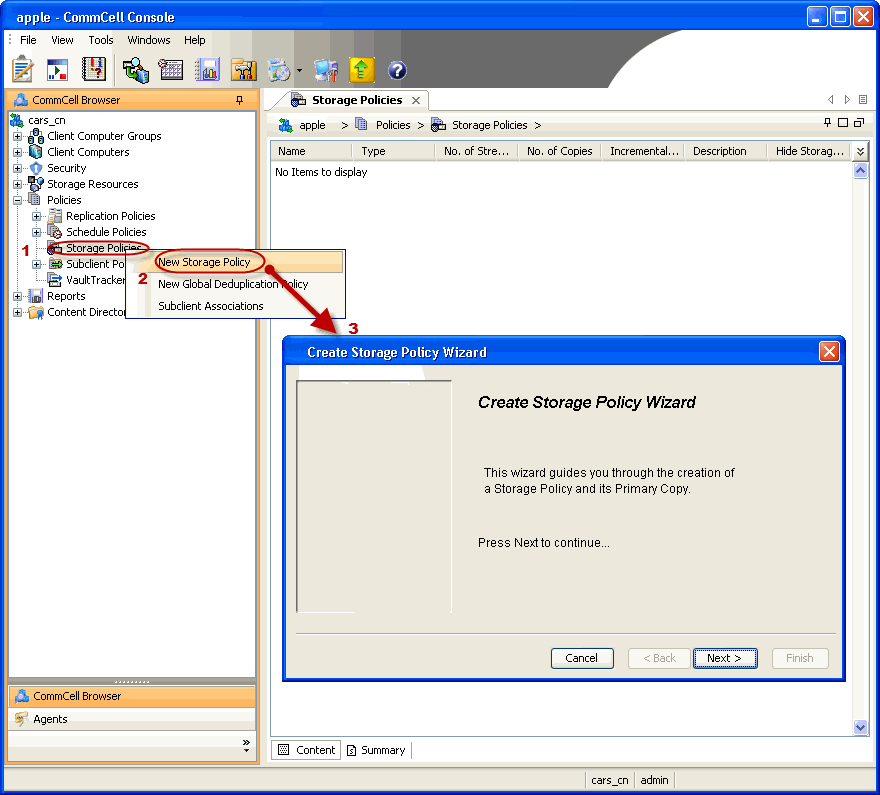 |
| 4. |
For Windows Client:
- Click Change.
- Enter the
User Name and Password to access the Oracle application.
Re-confirm the password.
- Click OK.
Use
<client_name>/<SID_name>adm, in order
to perform backup and restore operations from CommCell Console for the associated instance.
Make sure that the user has administrator privileges to access the
Oracle application.
|
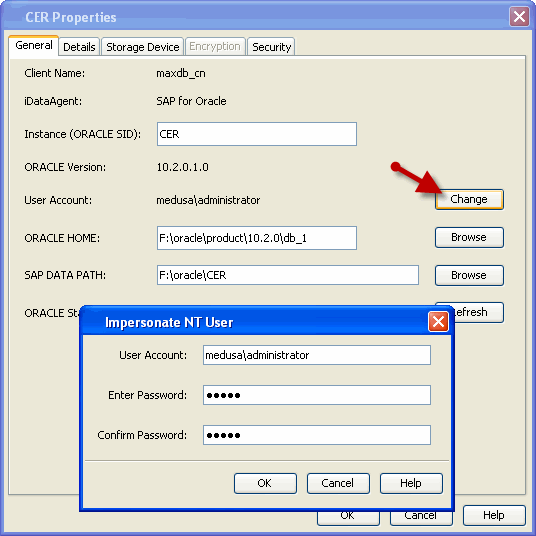 |
| |
For Unix Client:
- Enter the user name in ORACLE USER to access the Oracle
application on a Unix client.
Use <SID_name>adm, in order to
perform backup and restore operations from CommCell Console for the associated instance.
Make sure that the user has administrator privileges to access the
Oracle application.
|
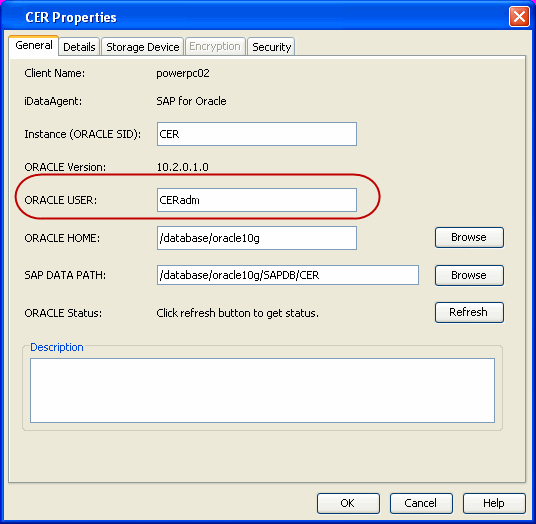 |
| 5. |
Click Details tab and add the following information:
- Enter the target database connect string in Connect String.
- Browse or enter the path to the SAP EXE folder in SAP EXE Folder (Required).
|
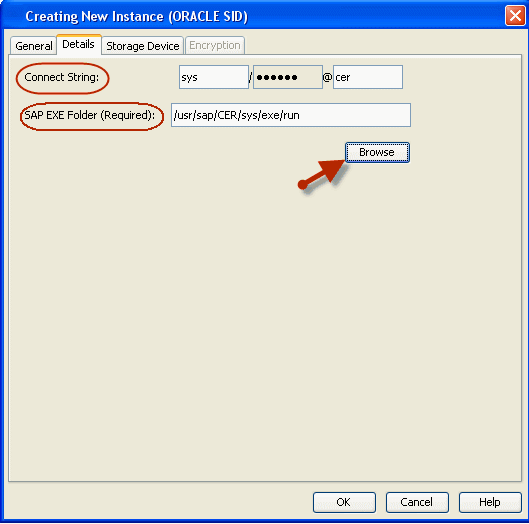 |
| 6. |
Click Storage Device tab.
Select a Storage Policy used for user command backup of data from the drop down list.
|
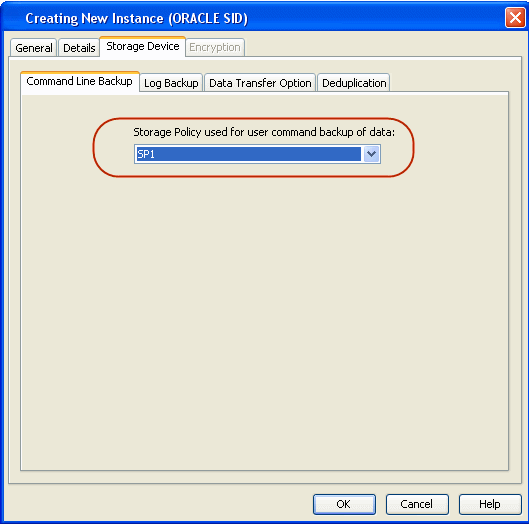 |
| 7. |
Click Log Backup tab.
- Select a Storage Policy
used for all Archive Log backups from the drop down list.
|
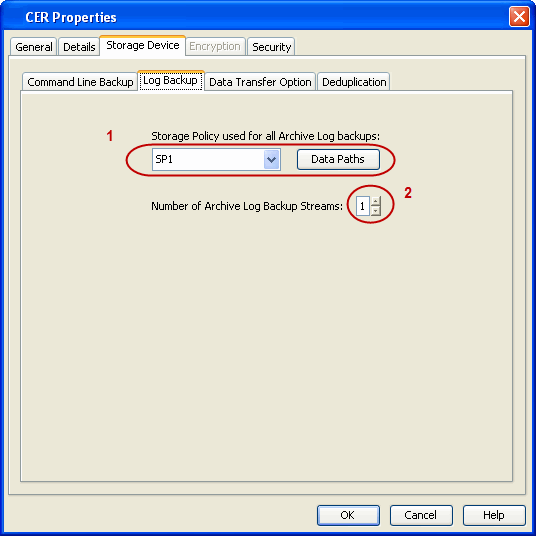 |













